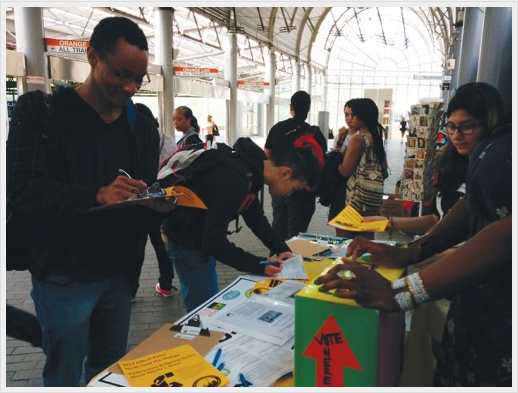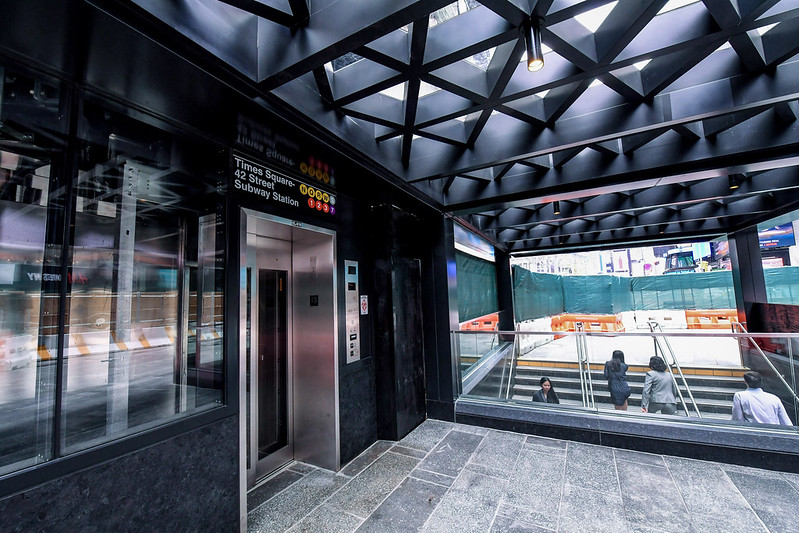
Photo: Young-people-12-25-vote-Boston-how-government-money-spent
Young, gifted and valued
18 May 2015
by Richard Forster
With national governments trying to woo more young voters with social media campaigns, one local government has demonstrated what young people really want: an active role in decision making. Richard Forster examines Boston’s participatory budgeting programme, which allows youth to suggest projects and ideas, which the city government will then implement on their behalf
With the financial crisis of 2008 having seen youth employment levels rise to alarming levels, the City Government of Boston in the US has taken a radical approach to youth engagement not only asking young people what they want to happen in the city but providing US$1 million for them to put towards capital projects which they believe in.
“It is astounding for many that young people are capable of doing something like this, and that is a little bit of what the problem is,” says Shari Davis, Executive Director of the Department of Youth Engagement and Employment in Boston. “Often their ability to contribute is undervalued and a project like this really blows this up for the world to see.“
Davis has been one of the architects of a new programme designed to bring youth aged 12-25 into the decision- making process of local government. Through a process of ideas collection followed by a formal vote by young people, Boston has selected seven projects, which will be funded by the mayor and brought to fruition on their behalf (see box).
While the concept of participatory budgeting has existed since 2009 in the US when Chicago first granted citizens the right to decide on how government money was spent, this is the first time that it has been extended to the young members of a city’s population.
“It is really difficult to ask people to become engaged and be civically minded but then not give them real ways to do that,” comments Davis. “This is one of those ways of engaging young people, which is powerful for them and powerful for the rest of the community.”
The origins of the programme go back to the late Thomas Menino, former Mayor of Boston, who championed the role of youth by setting up a Mayor’s Youth Council in 1994 on which Davis first served. The incumbent mayor, Marty Walsh, who came into office in 2011, took forward the participation of young people by setting up the Youth Lead The Change programme and providing funding for it with a vision of empowering youth to be future leaders for the city.
“I have found that by making young people a part of the process we are opening up a dialogue that allows young people to have a say in their own future here,” says Walsh.
The first steps involved setting up a Steering Committee of 60 people representing youth groups from across the city. At the beginning of January 2014, youth organisations were asked to nominate two youth leaders to serve on the Steering Committee. Their role was to determine the rules of the process, decide what the focus of the outreach focus would be, and who would be able to vote.
At the end of January, there were ideas collection assemblies set up across community centres and schools to collate feedback on what sort of projects young people wanted to kickstart in the city. Around 450 project ideas were generated by the ideas collection process.
“After the ideas collection we had Change Agents come together to develop our proposals who were young people that volunteered to go on different sub committees to vet the proposals that came in and to work with the experts to figure out what was feasible and what the community needs were,” explains Davis.
Stephen Lafume, a 16-year-old Bostonian was one such Change Agent. He had never met a city official before.
“I have seen ideas that have been proposed, been voted on and actually appear and happen and it has been awesome as you are actually involved in your government,” says Lafume. “Instead of not being able to change something, now you can.”
Lafume’s role was to work with adults including city government representatives to evaluate whether the ideas proposed could and should be shortlisted for the final vote. Change Agents had to take into account the parameters around capital investment and determine a cost for the project to see if it was within the budget range with projects needing to cost at least US$25,000 and to have a life span of five years to be eligible.
“I think working on the participatory budgeting process has made me
more confident that I could work as a government official whereas before I would have probably thought, ‘Where would I start?’,” adds Lafume.
The projects chosen by Boston youth
In June 2014, Mayor walsh announced that the following projects would receive funding from the city:
Franklin Park playground and picnic area upgrade
This project will include infrastructure upgrades and repairs to the American Legion Picnic Grove playground to better serve children with disabilities.
Boston art walls
Designated Free Wall Space will be provided for local graffiti writers and other visual artists to showcase their artwork. Volunteers and local youth organisations will help designate additional free wall spaces, as well as provide ongoing maintenance.
Chromebooks for high schools in east Boston, South Boston, and Charlestown
The students of East Boston High School, Charlestown High School, and Excel High School will receive approximately 30 Chromebook laptops. This will enhance student performance by providing them with the latest technology, allowing them to easily acquire information for academic assignments.
Skate park feasibility study
A feasibility study will be conducted in the Dorchester, South Boston, and East Boston neighbourhoods to explore the most sustainable methods of design and ongoing care for implementation of a skateboard park.
Security cameras for Dr Loesch Family Park
Dr Loesch Family Park and surrounding premises will receive 15 to 20 surveillance cameras to increase security and protection within the community.
Paris Street playground extreme makeover
Paris Street Playground will receive additional, new creative water features, as well as USB park benches and handicap accessible infrastructures.
New pavements for new parks
Boston’s newly-renovated Howes Playground and Mount Pleasant Park will receive pavement and lighting improvements around the perimeter of both locations.
The Steering Committee members serve for a ten-month process leading up to the vote whereas Change Agents are actively involved for a ten-week tenure working closely with adults and city representatives in project evaluation.
A US$100,000 budget was set aside by the city government to implement
Youth Leads The Change with much of the budget being used to hire the not-for-profit consultancy Participatory Budgeting Project, which was brought in to project manage and provide training materials. In addition, funds were used to print ballot papers, design and produce promotional materials, and provide payments to youth groups to assist with signage for the voting.
Voting for their future
The idea was to produce a list of 14 eligible projects for which a ballot would then take place at community centres and schools across the city with young people able to vote on which projects should be implemented by the city government. The vote itself was the first time that many young people had voted and in particular the Steering Committee sought to bring in voters from underserved communities including raising awareness among homeless and disaffected youth.
“Social media is a huge part of our outreach with Instagram and Twitter and all our committee members reach out and get people to come to our events,” says Maggie Sullivan, a member of the 2015 Steering Committee. “Also we have T-shirts being made, banners being hung, flyers being printed and people reaching out to news centres and sports teams to get the message out that this vote is taking place.”
A mobile and text messaging platform was set up in partnership with Mobile Commons so that at any phase of the project, young people could voice opinions and receive information on events and updates on the initiative.
For the first ballot, which took place in June 2014, 1,500 young people voted, which was in line with Davis’s expectations. Voters could select projects in four categories: streets and safety; parks/environment/health; community and culture; and education.
Although the ideas had been collected from a broad range of citizens, including those outside the 12-25 age group, only youth could vote on how the budget would be spent.
“We reached out to schools and packaged a voting toolkit so anyone could implement it at their school and so this was another area we were piloting to see if schools would sign on,” says Davis. “We are proud that the bulk of the young people who participated were in the teenage range between 15 and 20 because we were a little nervous that a really high number of college students would participate which would not really represent the community or the city.”
Davis says the condensed timelines were a challenge in the first round of the programme. “One of our recommendations [for 2015] is around having an extended timeline for ideas collection, especially around proposal development where the deepest engagement happened and that is where young people experienced the most benefit from participation.”

The city is also looking at more online engagement. “I am looking at creating a better web presence and some online idea collection solutions and possible text message solutions and Skype or Google Hangout opportunities so folks can get together and not have to travel,” says Davis. “It is Boston and it is winter time when we are doing idea collections!”
The scheme has led to young people not only learning about city planning and the budget process but also it has developed their professional skills.
“I have learnt so much from navigating my way through city hall, to what a capital project is, how participatory budgeting works, to voice my opinion and how to speak to others to take other opinions and speak to journalists and get the word out. It has been a really great experience for me,” says Maggie Sullivan.
Above all, the Boston initiative has demonstrated how governments can build trust even with the most disaffected group of citizens. It was one of the fifteen shortlisted initiatives or the 2014 Guangzhou International Awards for Urban Innovation.
“This is a transparent and effective process which allows them [young people] to own and shape what their community looks like in a collaborative way and they get to learn and trust government in a unique way,” says Davis. “Also we are almost getting consulting pro bono from our own community and it is fantastic to be able to work together to implement what is a vision for everyone involved.”










